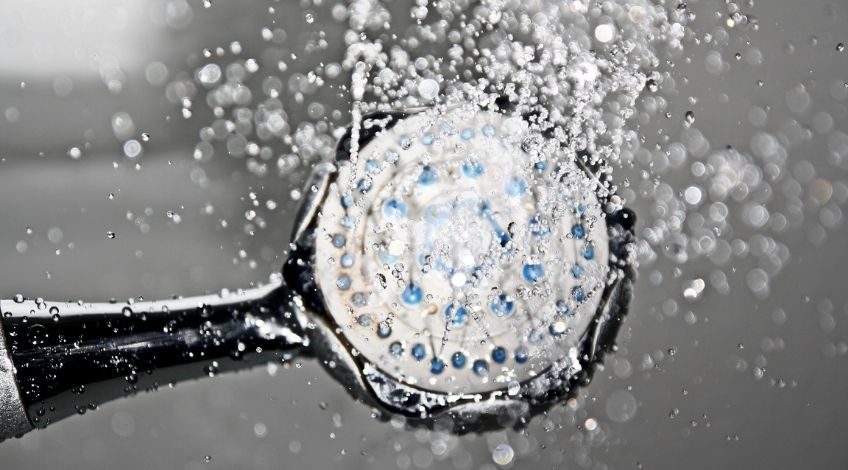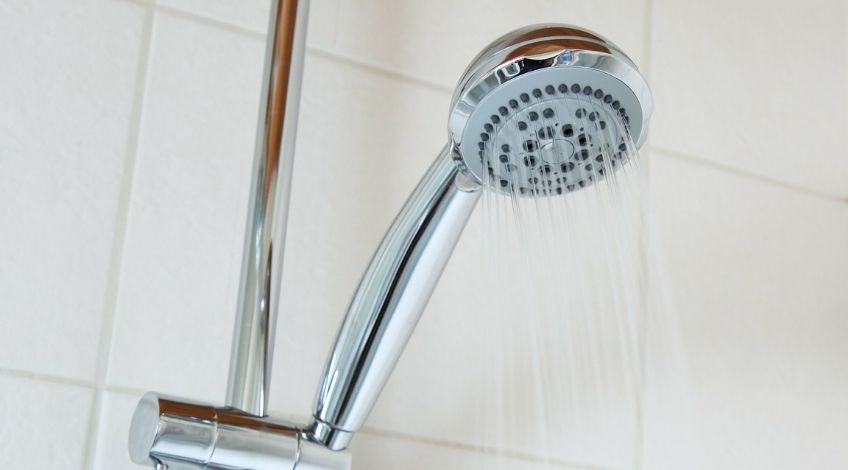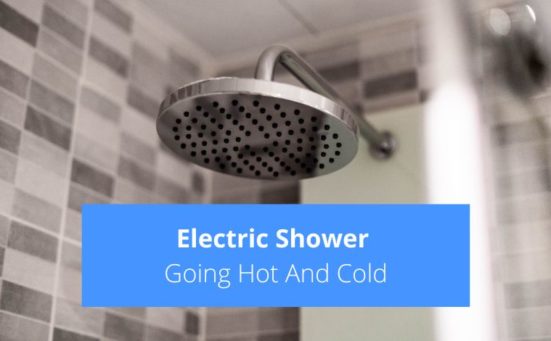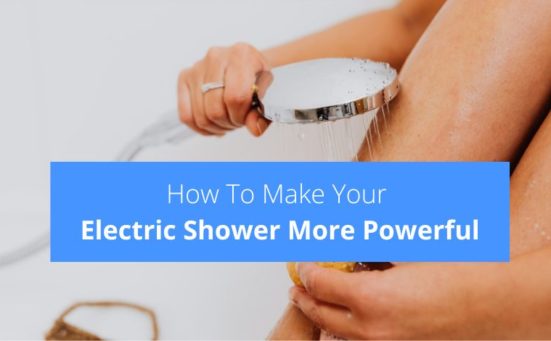
How Do Power Showers Work?
The difference between a power shower and a regular electric shower is a water pump. Electric showers work by utilising the existing water pressure to force the water past a heating element and out through the showerhead. Power showers use a water pump to force the water through the system.
Power showers combine water from the hot and cold water supply to achieve the temperature you prefer and are thermostatically controlled to avoid burning. They work on gravity-fed, low-powered systems and boost the power with an electronically powered water pump. Power showers cost more to operate but as you will usually spend less time under a power shower the costs balance themselves out.
Power Showers Maintain A Constant Water Pressure
With electric showers, the water is supplied from the main feed and is subject to pressure loss if another tap is turned on elsewhere in the home. Power showers have their own internal water pump that maintains a constant water pressure whatever demands are made on the system. The extra water pressure generated by a power shower has been described as the difference between drizzle and a full-on storm.
How Many Types Of Power Shower Are There?
There are 3 main types of power showers and they all rely on a water pump to power-up the water, but the pumps are in different locations.
Self-Contained Unit
The most common are the power showers with the water pump incorporated into the control unit, along with the mixer. These are fitted to the shower wall and can be operated manually whilst showering.
Single Impeller Pump
This type has a single impeller pump fitted between the mixer and the showerhead. This style is going out of fashion nowadays as they aren’t very versatile, and double impeller pumps are around the same price. A single impeller is connected to the mixer unit after the hot and cold water passes through it, to pump the water to the showerhead.
Double Impeller Pump
As the name suggests, a double impeller pump Is connected to both the hot and cold water feeds before the mixer unit, and can supply high-pressured water to all taps and showers in the house.
What Do All 3 Types Of Power Showers Have In Common?
Power showers do not heat the water, they just move the water under pressure to the showerhead. They all need an electrical supply for the pump, a special flange connector to prevent any air entering the water system which would stop the water flow.
Power showers have a high water flow rate, you may need to install a deeper shower tray and/or waste pipe. They all also need a large supply of water from the tank.
How Big Should The Water Tank Be For Use With A Power Shower?
When using a power shower with a pump, the flow of water will be greater than previously used. So a new water tank will probably need to be fitted. This tank should hold at least 40 gallons (180 litres) But a 50 gallon (225 litres) tank is better.
How Much Does It Cost To Use A Power Shower?

Let’s look at costings now, how much does it cost to use a power shower per shower.
How Much Does The Water Cost For A Power Shower
The average time spent in a power shower is 10 minutes and the average power shower uses 15 litres of water per minute. That’s 150 litres of water at 0.1 p per unit (average UK water cost) which gives a total water cost of 15 pence.
15 l/m x 10 minutes x 0.1 cost per unit = 15 pence
So a 10-minute power shower will use 150 litres of water and will cost on average 15 pence.
How Much Does The Electricity Cost For A Power Shower
Power showers are rated for power in Kilowatts, they range in power from 7.5 kW to 10.8 kW. With an average price of 16 pence per kw/h working with a 10-minute shower as our guide, we can see how much this will cost in the chart below.
| Power in kilowatts | Per 10 minutes | Per week | Per annum |
|---|---|---|---|
| 7.5 kW | 20 pence | £1.40 | £73.00 |
| 8.5 kW | 22.67 pence | £1.59 | £82.73 |
| 9 kW | 24 pence | £1.68 | £87.60 |
| 9.5 kW | 25.33 pence | £1.77 | £92.47 |
| 10.8 kW | 28.80 pence | £2.02 | £105.12 |
Prices based on a 10-minute shower with electricity at the rate of 16 pence per unit. Using these figures as our basis we can see that the total cost of a 10-minute power shower will be between 35 pence and 44 pence depending on the electricity rating of the power shower. This is because we have to add the 15 pence for the water usage to each electricity figure.
How Long Do Power Showers Last?
This question can be taken in 2 very different ways how long should a power shower keep running, and how many years will a power shower last. So let’s look at them one at a time.
How Many Showers Can Be Taken One After Another?
This is really dependent on the size of your hot water cylinder. A 10-minute shower will use on average 150 litres of water, power showers feed from both hot and cold water supplies. But once the hot water runs out, it will take the boiler time to reheat the water and replace it in the hot water cylinder.
It is probably best practice to allow 15 to 20 minutes between showers to let the hot water cylinder refill. Then the next user will have enough hot water for a comfortable shower.
How Many Years Will A Power Shower Last?
After much research, we have found that most reputable power shower manufacturers offer a 1 to 3-year warranty on their power showers. So depending on the make and the model, they’re guaranteed to last 1 to 3 years. Many power showers fall foul to scale build-up in the pipes caused by hard water.
Sadly the majority of the United Kingdom suffers from hard water. So it’s inevitable that over time, your power shower will develop a fault caused by limescale deposits. Some can be repaired, but it usually works out financially better to replace the power shower (as long as you can find an exact fitting replacement).
If you do have to replace pipes tiles etc, you will be looking at a fairly large bill.
How Much Does It Cost To Buy A New Power Shower And Have It Installed?
The average cost of a power shower ranges from £150 to £600, and anywhere between £150 to £270 to have it fitted. Less if it’s a simple in/out replacement as this will probably only take a couple of hours so around £80 to £150.
There are of course additional costs that could be incurred, if you live in London there’s probably an extra £30 to £70 extra charge than if you live in the North of the UK. Plus tiling, you might get away with £100 to replace a few tiles, but if you decide to have the whole bathroom done you can expect to pay anywhere between £450 to £700 for a medium-sized bathroom.
Frequently Asked Questions
You can’t have a power shower with a combi boiler because power showers need to be connected to a hot water cylinder and a combi boiler doesn’t have a hot water cylinder.
Power showers do have built-in pumps to force the water through to the showerhead.
You can have a power shower with low water pressure. Power showers were designed to be used with low-pressure systems.
The most powerful power shower is 10.8 kW to perform at it’s best it will require a minimum of 1.5 bar water pressure and a flow rate of at least 11 litres per minute.
It is cheaper to take a shower than a bath. It takes around 180 litres of water to fill a bath and the average shower uses 150 litres of water.
A 10-minute shower is not too long, in fact, according to medical experts 10 minutes in the shower is the perfect length of time. Any longer can cause skin damage.




